The Journey of Veterinary Students: Education and Resilience
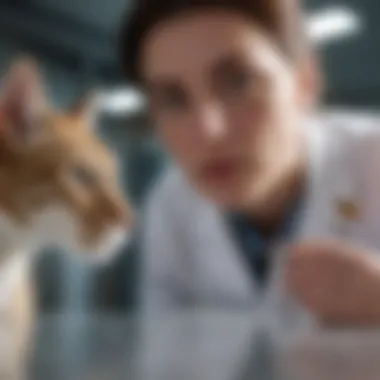
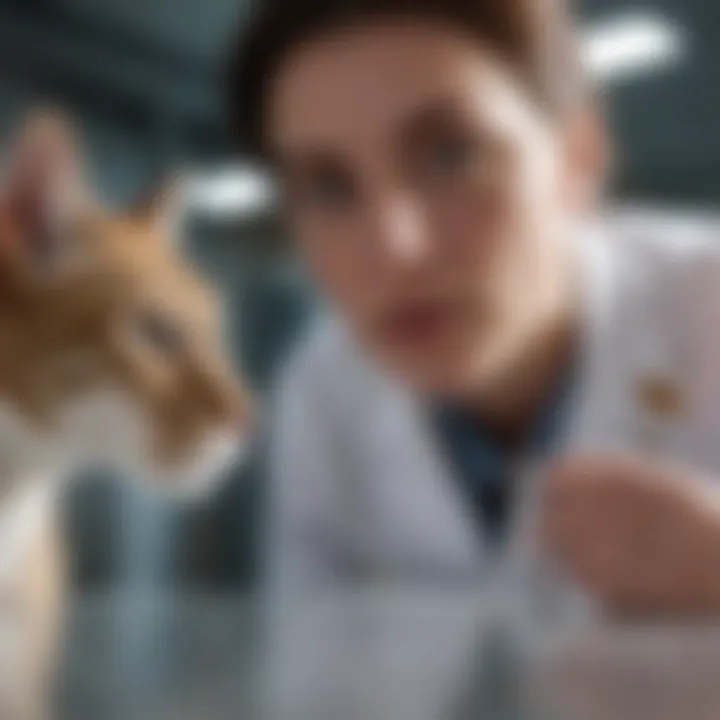
Article Overview
Veterinary students embark on a demanding pathway marked by academic rigor and practical engagement. This journey is not merely about learning the science behind animal health; it involves a broader understanding of social dynamics and an ability to adapt to various challenges. The veterinary curriculum is designed to offer a balanced mix of theoretical knowledge and hands-on experience, forming the backbone of their professional training.
Summary of Key Findings
Throughout this exploration of the veterinary academic journey, several significant aspects emerge:
- The merging of theoretical learning with practical application is critical for vet students.
- Mental resilience proves equally important as technical competencies, shaping how they navigate the pressures of their education and future careers.
- An increased focus on societal and environmental factors affecting animal health highlights the evolving role of veterinarians.
Research Objectives
The central aim of this article is to provide an insightful overview of the various components that constitute the journey of veterinary students. This includes:
- Understanding the curriculum and practical experiences of veterinary education.
- Analyzing the challenges students face, including mental health issues and work-life balance.
- Discussing the significance of veterinarians in addressing contemporary social and environmental issues.
Key Findings and Discussions
Main Findings
Delving further into our findings, we learn that veterans in veterinary school are often faced with overwhelming amounts of information, along with the emotional weight of animal care. This dual burden requires not just cognitive skills, but also a profound ability to cope with stress. From managing their time effectively to seeking support when necessary, students often find themselves balancing on a tightrope.
- Integration of disciplines: The curriculum often includes aspects of biology, ethics, and even business management, preparing them for a multifaceted approach to their career.
- Hands-on experiences: Clinical practice accommodates various animals, reinforcing their learning, while also introducing the complexities of animal care.
Implications of Findings
Understanding the veterinary student experience has far-reaching implications for both academic institutions and future practitioners. By recognizing the pressures these students face, institutions can tailor support programs to enhance mental well-being and academic success. Schools could implement peer counseling, mentorship programs, and workshops focused on resilience.
Moreover, as the role of veterinarians evolves, students must be educated not just in medicine but in social consciousness as well. Increased awareness of global issues and interconnections in animal health will prepare them to be effective advocates for their field. Their role in community wellness and public health needs to be underscored within their training. In doing so, the future of veterinary medicine will be better equipped to face both current and upcoming challenges.
“Veterinarians are not just animal doctors; they are vital links between animal health, public health, and environmental sustainability.”
To summarize, the article illuminates the intricate journey of veterinary students, creating a roadmap that could potentially redefine veterinary education and practice in the years to come.
Intro to Veterinary Education
Veterinary education serves as the bedrock for aspiring veterinarians, shaping their skills and philosophies that guide them throughout their careers. Understanding the journey of veterinary students is critical, as it unveils the complexities of veterinary medicine and sheds light on the unique challenges faced within this demanding profession. The educational experiences not only equip students with the necessary knowledge but also instill a sense of duty towards animal welfare and public health. This segment aims to offer insights into both the historical development and current frameworks that underpin veterinary education.
Historical Context
The evolution of veterinary education traces back several centuries. The discipline initially emerged in ancient societies where practitioners studied animal illnesses without formal training. As time marched forward, formal institutions began to sprout. For instance, the first veterinary school was established in Lyon, France, in 1761. This was a revolutionary moment, allowing for structured education focused on animal care and management.
From those early days, the field has matured remarkably, reflecting advancements in science and animal husbandry practices. In the late 19th and early 20th centuries, veterinary curriculums began to include more robust scientific principles, emphasizing the importance of anatomy, pathology, and microbiology. As countries began to recognize the significance of veterinary science, educational frameworks expanded accordingly, with more institutions setting up specialized programs.
Current Educational Frameworks
Today, veterinary education varies widely across the globe but generally adheres to a core framework designed by regulatory bodies and educational institutions. In many countries, earning a Doctor of Veterinary Medicine (DVM) degree typically spans four years post-bachelor's degree. The educational structure balances theory and practice through a series of required and elective courses.
Core components of the curriculum include subjects such as:
- Anatomy and Physiology: Understanding the biological systems of different species.
- Pharmacology: Insight into medications and their effects on animals.
- Pathology: Studying diseases that afflict animals and how these can be managed or prevented.
Moreover, veterinary schools often encourage interdisciplinary learning. Students might take courses that overlap with fields like wildlife conservation, public health, and even business management, recognizing that being a veterinarian today goes beyond animal care.
The rise of technology has also influenced recent frameworks. The incorporation of digital tools in learning ensures students are familiar with the latest advancements in diagnostic imaging and electronic health records, crucial for modern veterinary practice.
In sum, understanding both the historical context and current frameworks of veterinary education unveils the intricate tapestry of learning that veterinary students navigate. This foundational knowledge will be vital as we explore the academic curriculum that shapes their expertise.
The Academic Curriculum
The academic curriculum forms the very backbone of veterinary education, guiding students through a comprehensive journey rife with both scientific inquiry and practical applications. This curriculum is not only designed to impart essential knowledge but also to shape future veterinarians into well-rounded professionals. Understanding the core components of this framework can be instrumental in preparing students for the multifaceted challenges of the field.
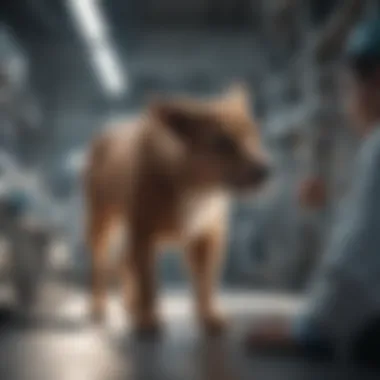
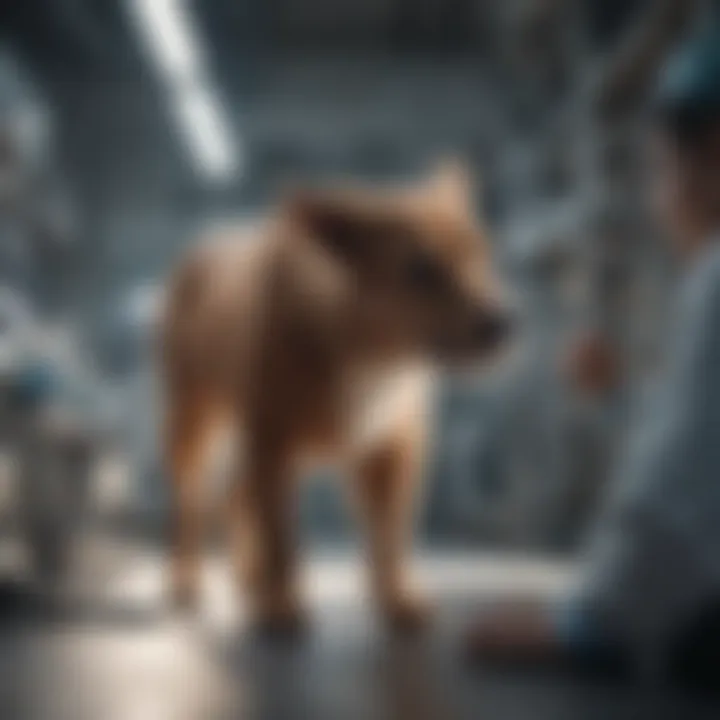
Core Subjects and Prerequisites
At the heart of the veterinary curriculum lie core subjects that lay down the fundamental principles of veterinary science. Courses in anatomy, physiology, microbiology, pharmacology, and toxicology are indispensable. These subjects act like the building blocks, providing the essential understanding that students will build upon as they progress.
One crucial requirement often overlooked by newcomers is the necessity of academic preparedness. Students are typically expected to have a solid foundation in biology and chemistry before diving into the more specialized veterinary courses. This enables them to grasp complex concepts more easily, making the learning curve a bit less steep. After all, it’s hard to appreciate the intricacies of animal health without first understanding basic life sciences.
Electives and Specializations
As students progress, they gain the opportunity to explore areas that pique their interest through electives and specializations. These courses offer a fantastic avenue for students to tailor their education according to their professional aspirations. From exotic animal medicine to veterinary public health, the elective offerings are as diverse as the animals they will one day care for.
Diving into specialized subjects also allows students to gain a competitive edge. For instance, a student keen on wildlife conservation might choose subjects related to conservation medicine, while a future small animal practitioner may focus on advanced surgical techniques. This depth and breadth of options not only keep education engaging but also prepare aspiring veterinarians for the specific challenges they may face in their careers.
Laboratory and Practical Sessions
No veterinary curriculum would be complete without robust laboratory and practical sessions. These hands-on experiences are crucial in translating theoretical knowledge into practice. Students engage with real-world scenarios, often utilizing animal models or simulations to hone their skills.
Laboratory work presents students with the chance to practice procedures, from basic suturing to advanced diagnostic techniques. Practical sessions teach students not just how to perform technical tasks but also how to think critically when faced with unexpected situations.
"Practical training bridges the gap between theory and reality, equipping students with the arsenal needed for real-world veterinary practice."
These laboratory settings often mimic actual veterinary scenarios, creating an immersive environment that prepares students for their future roles as competent practitioners. By the end of their studies, students are not just book-smart; they are ready to make sound clinical judgments when the rubber meets the road.
In summary, the academic curriculum for veterinary students is multifaceted and well-structured, encompassing core subjects, electives, and hands-on training. This comprehensive educational framework is pivotal in preparing students for the challenges of veterinary medicine while instilling a lifelong passion for animal care. As the landscape of veterinary education continues to evolve, understanding its intricacies will be increasingly vital for future entrants into this rewarding field.
Clinical Training and Internships
Clinical training and internships form the backbone of a veterinary student's education, serving as a bridge between theory and practice. These pragmatic experiences not only enrich the academic curriculum but also allow students to apply their knowledge in the real world. The importance of hands-on training cannot be overstated; it empowers students with essential skills, enhances their confidence, and gives them a glimpse into the daily realities of veterinary medicine.
Importance of Hands-On Experience
When it comes to fields as intricate and sensitive as veterinary medicine, hands-on experience is vital. Students get the opportunity to work directly with animals, managing diverse health concerns—be it routine check-ups or emergency situations. This exposure cultivates a level of familiarity and comfort that can't be achieved through textbooks alone.
In addition to dealing with animals, interns learn to interact with clients. These skills are crucial in building trust and communicating effectively about a pet's condition or treatment options. According to a 2022 study by the International Journal of Veterinary Medicine, students with extensive hands-on experience are 30% more likely to report confidence in their abilities.
"Clinical training is where the rubber meets the road in veterinary education. It’s not just about knowing—it's about doing, feeling, and connecting."
Partnerships with Veterinary Clinics
Establishing partnerships with local veterinary clinics is a strategic move that benefits students immensely. These collaborations often facilitate internship opportunities, enabling students to gain exposure in a variety of practice environments. Whether in emergency clinics, private practices, or specialized animal hospitals, each setting provides unique learning experiences.
For instance, through these partnerships, students can engage in rotations that focus on different areas—surgery, dentistry, and even exotic animal care. This not only broadens their skillset but also helps them identify their interests early on. It’s essential, too, for schools to foster these partnerships, as they lay the groundwork for enhanced learning and, sometimes, job placement after graduation.
Fieldwork and Community Engagement
Fieldwork and community engagement serve multiple purposes in veterinary education. Such initiatives often include outreach programs that educate pet owners about responsible animal care, vaccination drives, and involvement in wildlife conservation efforts. These activities not only provide practical experience but also instill a sense of social responsibility in students.
Participating in fieldwork allows students to engage directly with the communities they serve. They learn the nuances of animal welfare in various cultural contexts, which is crucial as medical practices and belief systems can greatly differ. This is particularly important in today's interconnected world where a holistic approach is increasingly valued.
Engagement in community projects can also open up channels for networking, which may prove invaluable as students transition into professional life. Moreover, it offers them the chance to apply their learning in diverse situations, often requiring innovative thinking and adaptability—the skills that will help them excel in their careers.
In summary, clinical training and internships in veterinary education are not merely obligatory components; they are pivotal to fostering proficient, confident, and socially aware veterinary professionals. By embracing hands-on experiences, forming meaningful partnerships, and engaging with the community, students position themselves for success in this rewarding field.
Challenges Faced by Veterinary Students
Veterinary students embark on a journey filled with immense passion for animal care and science. However, this pursuit doesn't come without its own set of hurdles. Understanding these challenges is paramount to appreciating the commitment required in this field. Each impediment, from rigorous academic demands to financial strains, shapes not only the students but also the future of veterinary medicine itself.
Academic Pressure and Workload
The academic environment for veterinary students is notoriously intense. With the curriculum packed tighter than a tin can, students juggle a myriad of subjects that span anatomy, pathology, pharmacology, and more. They often find themselves up to their necks in coursework, feeling the squeeze of deadlines and high-stakes examinations.
The pressure can be overwhelming, leading to feelings of inadequacy or burnout. It's not uncommon for students to study late into the night, drowning in notes and textbooks as they prepare for their next big test. This relentless workload can lead to a steep learning curve, requiring students to adapt quickly to the expectations set by faculty.
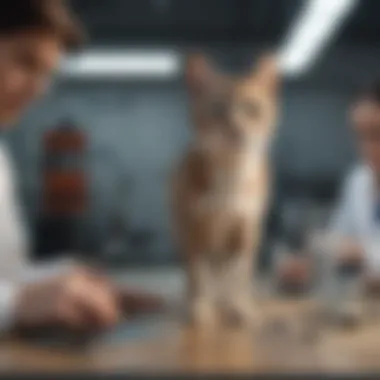
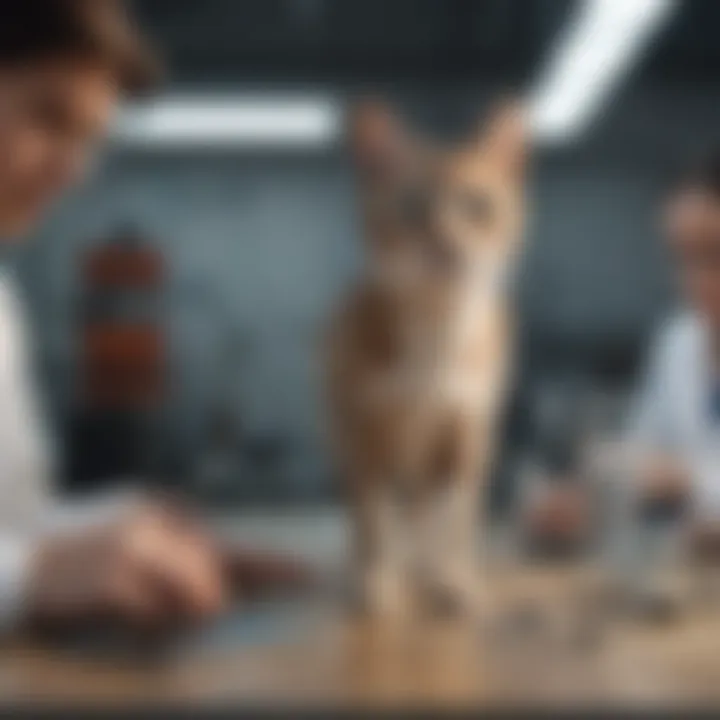
"In my first year, I often thought I had bitten off more than I could chew," shared one veterinary student. "Balancing lectures, labs, and studying for exams felt like trying to juggle flaming torches while riding a unicycle."
Financial Constraints
The financial aspects of veterinary education can also weigh heavily. Many veterinary students find themselves in a bind, seeking ways to manage tuition, fees, and living expenses. The investment needed for this education is significant; tuition fees often rival those of medical schools. For some, this translates into substantial student debt that follows them long after graduation.
Working part-time can alleviate some financial burdens, but many students struggle to balance a job and their studies. This can lead to a cycle where they’re constantly worried about finances instead of focusing on mastering veterinary medicine.
- Tuition Fees: Can exceed $50,000 per year at some institutions.
- Living Expenses: Rent, food, and other costs add up quickly.
- Debt Load: Many graduates walk away with debts ranging from tens of thousands to well over a hundred thousand dollars.
Mental Health Considerations
The combined stress of academia and finances can wreak havoc on the mental health of veterinary students. With high expectations from themselves and their peers, the pressure to excel can become burdensome. Many students experience anxiety, depression, or other mental health issues during their training.
Moreover, the stigma surrounding mental health in the veterinary field can prevent students from seeking help. They might feel that asking for support is a sign of weakness, leading them deeper into isolation. This unspoken barrier poses a risk not just to their well-being but also to their future careers.
It's essential for veterinary programs to foster an environment where mental health resources are available and encouraged to be utilized. Instituting peer support groups or counseling services can provide valuable outlets for students to discuss their challenges.
Veterinary education comes with mixed blessings - the path is worthy yet laden with trials. As such, addressing these challenges head-on can pave the way for future innovations in support systems for aspiring veterinarians.
Skills Development
Skills development is an integral piece of the puzzle for veterinary students as they embark on this challenging yet rewarding academic journey. It's not just about soaking up knowledge from textbooks; it's about translating that knowledge into actionable expertise that can be applied in the real world. The veterinary field demands a unique blend of technical prowess and personal attributes that are essential for effective practice. A comprehensive understanding of this diverse skill set can significantly influence a student’s capability to succeed and thrive in their future career.
Technical and Clinical Skills
Technical skills form the backbone of veterinary education. These are the hands-on abilities that students hon their way through lab work and clinical experiences. Mastering the art of animal examination, performing surgeries, and accurately diagnosing diseases are fundamental tasks all veterinary students must learn.
Students practice their skills in simulated settings before moving into real clinical environments. This step-by-step progression ensures they are fully equipped to handle the diverse challenges they will face in practice. For example, gaining proficiency in surgical techniques often involves repeated practice under the supervision of seasoned professionals, enabling students to develop muscle memory and gain confidence.
"The path to expert veterinary care lies in mastering both the art and science of medicine."
Furthermore, students often get to work with advanced technology such as ultrasound and radiography tools. Acquainting oneself with these technologies not only enhances diagnostic accuracy but also improves overall efficiency in providing care.
Soft Skills for Veterinary Practice
Soft skills are less tangible but equally critical in the veterinary profession. Communication skills, for instance, can't be overstated. A veterinarian must articulate complex medical information to pet owners who may not have any medical background. Furthermore, strong interpersonal skills help in establishing rapport with clients and their animals, fostering trust in a veterinarian-client relationship.
Another area of soft skills that becomes vital is empathy. Understanding the emotional state of pet owners during distressing times is crucial for providing holistic care. Students often engage in role-playing exercises that involve complex scenarios, preparing them to deal with human emotions while delivering hard news or making tough decisions regarding a pet’s treatment.
- Confidence is another key soft skill, aiding them in making quick decisions during emergencies.
- Time management is essential to balance multiple cases, ensuring no patient feels neglected.
Veterinary students must cultivate these skills alongside their technical training to flourish in their careers, proving that both hard and soft skills go hand in hand.
Research and Critical Thinking Skills
Research and critical thinking skills are the lifeblood of the veterinary profession. Being able to research current treatments, breakthroughs in animal health, and the latest veterinary practices keeps practitioners at the top of their game.
Students are encouraged to engage in research projects, often addressing real-world problems in veterinary medicine. This hands-on involvement cultivates a mindset of inquiry and problem-solving that is essential in a constantly evolving field. Critical thinking not only aids in diagnostics but also empowers students to analyze and interpret scientific data effectively.
Through coursework and various projects, students learn to scrutinize peer-reviewed articles, assess the validity of methodologies, and apply findings to clinical practice. This rigorous academic groundwork ensures they can make informed decisions that positively impact animal health.
The Role of Veterinary Students in Society
Veterinary students play a significant role in today's society, engaging in various issues that transcend the mere care of animals. They bring a unique perspective that merges health care, science, and advocacy, helping to bridge gaps in multiple domains. The importance of this participation cannot be overstated; as they prepare to step into their professional lives, they are not just learning about animal medicine. They are gaining insights on how animal health impacts public welfare, environmental sustainability, and ultimately, human health.
Animal Welfare Advocacy
One key area where veterinary students contribute greatly is in animal welfare advocacy. These students often find themselves at the forefront of movements aimed at improving the lives of animals—be it through legislative changes, outreach programs, or education. Their understanding of animal behavior and health positions them uniquely to address serious issues such as neglect and cruelty. They can explain the nuances and necessities of humane treatment, offering their voices to shape public opinion and influence policy.
Moreover, their participation in humane education initiatives fosters compassion and awareness in their communities. They are likely to host workshops, engage in school programs, or collaborate with local shelters, spreading knowledge about proper care and the importance of adoption versus buying pets. Through these efforts, they not only advocate for animals but also champion ethical practices among the public.
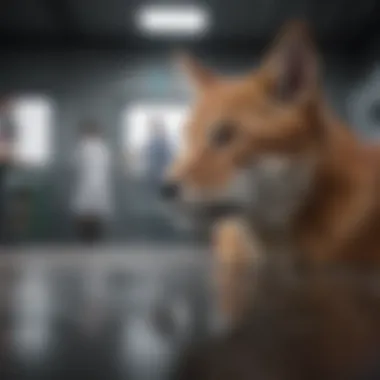

Public Health Contributions
Veterinary students also bridge the relationship between animal health and public health. With an understanding of zoonotic diseases—those that can jump between animals and humans—they are critical in preventing potential outbreaks that could harm human populations. Their training includes a solid foundation in epidemiology which aids in tracking and controlling disease transmission.
They often participate in community health initiatives that educate the public about the importance of vaccinations, both for pets and for livestock. For instance, by driving awareness around rabies vaccination programs, these students contribute to stronger public health infrastructures.
"Veterinarians stand at the intersection of animal and human health; their insights are invaluable in preventing zoonoses and ensuring public health."
Environmental Stewardship
Lastly, the environmental stewardship role taken on by veterinary students cannot be overlooked. They are often advocated for sustainable practices not just within veterinary medicine but across broader societal contexts. Their training includes awareness of how animal agriculture impacts the environment, leading them to support methods that are conscious of ecological footprints.
Many students engage in projects aimed at reducing waste in veterinary practices or promoting the use of environmentally friendly products—efforts that reinforce a conscious approach to animal healthcare. Additionally, they may involve themselves in research focusing on wildlife conservation, exploring the effects of habitat destruction and climate change on animal populations, thereby supporting biodiversity preservation.
In essence, the contributions of veterinary students extend beyond the classroom and clinic; they touch upon critical societal themes. As they continue their journeys, their work in animal welfare, public health, and environmental sustainability holds the potential to shape a more compassionate and conscious world.
Future Trends in Veterinary Education
As the field of veterinary medicine evolves, the education surrounding it must shift to meet new demands and advancements. Future trends in veterinary education hold significance not only for current students but also for the broader context of animal health and well-being. Embracing these changes can lead to better preparedness for the challenges that veterinary professionals may face in a rapidly changing world.
Emerging Technologies in Training
The introduction of emerging technologies is transforming how veterinary students learn. Tools such as virtual reality (VR) and augmented reality (AR) are becoming commonplace in classrooms. These technologies allow students to participate in lifelike scenarios without the risk associated with live animals.
- Animal Interaction: VR enables students to interact with various species in a simulated environment, helping them to practice their clinical skills with minimal ethical concerns.
- Surgical Training: Innovations in surgical simulators give students hands-on experience, which is crucial for building confidence in real-world situations.
In a world increasingly driven by technology, it becomes essential for educators to keep pace. Integrating these advancements into the curriculum not only enhances learning but also ensures that future veterinarians are equipped with the skills necessary to engage with modern veterinary practices.
Adapting to Global Veterinary Practices
The veterinary field is far from static. It reflects global shifts in public health, environmental concerns, and animal welfare. As veterinary education adapts, international collaborations and comparative veterinary practices become vital.
- Cultural Sensitivity: Veterinary students must understand diverse practices from around the world. This means learning how cultural attitudes towards animals can shape veterinary work.
- Collaborative Programs: Engaging in exchange programs with institutions abroad prepares students for international cases that require a deeper understanding of global veterinary practices.
Educational institutions need to foster adaptability among students, preparing them to work in various contexts while advocating for the best practices recognized worldwide. This not only enhances the students’ understanding but greatly benefits the communities they will serve.
Expanding Online Learning Opportunities
Online education has surged, especially in light of recent global events. Veterinary schools are starting to offer hybrid models, merging traditional learning with online elements. This flexibility can be beneficial for many students.
- Accessibility: Distance learning can cater to those unable to commute to a campus, making veterinary education more accessible.
- Self-Paced Learning: Students can tailor their educational journey, revisiting materials that challenge them while moving quickly through topics they grasp more readily.
By capitalizing on digital resources, veterinary education can broaden its reach and provide students with diverse learning opportunities. E-learning platforms and interactive programs can help cultivate a generation of veterinarians ready to tackle modern challenges effectively.
"The integration of technology, global perspectives, and online learning not only reflects current needs but will also shape the future of veterinary education, ensuring a well-rounded experience for aspiring veterinarians."
Overall, staying attuned to future trends is critical. These changes offer fresh avenues for veterinary students to explore and grow, ultimately leading to more effective practitioners in animal care and public health.
Ending
The conclusion of this article serves as a reflection on the notable journey of veterinary students. The path they tread is not merely one of academic pursuit but also of profound commitment and adaptability. Throughout the sections covered, we have explored various dimensions of their educational experiences, from the rigorous curriculum they navigate to the essential hands-on training they undergo.
Recap of the Veterinary Journey
In summarizing the veterinary journey, it’s clear that students today must juggle various responsibilities. From mastering core subjects like animal physiology and pharmacology, to engaging in real-world internships, they develop a blend of theoretical knowledge and practical prowess crucial in their profession. These experiences can be summarized as:
- Academic Rigor: The curriculum ensures that students are well-versed in both science and the arts of healing.
- Field Training: Through internships and community engagement, students gain insights into practical challenges and solutions in animal care.
- Soft Skills Development: Alongside technical skills, emphasis is placed on communication, empathy, and ethical decision-making, all of which are invaluable in veterinary practice.
To further highlight, students often face significant stressors, including financial burdens and academic pressure, yet they emerge from these challenges with resilience and determination. Their journey reflects both personal growth and professional preparation, which is pivotal to bettering animal health and welfare.
Encouragement for Future Students
As we conclude, future veterinary students should be informed of the challenges but also inspired by the rewards the profession brings. Those aspiring to walk this path should:
- Embrace Adaptability: The landscape of veterinary medicine is constantly evolving with emerging technologies and global practices. Being open to learning is essential.
- Seek Support: Joining networks, whether online communities on platforms like reddit.com or local student organizations, can offer invaluable resources and camaraderie.
- Focus on Passion: Engage in areas of veterinary medicine that spark joy. Whether that's domestic animal care or wildlife conservation, following one's passion leads to fulfillment.
"The veterinary path is both challenging and incredibly rewarding, providing opportunities to make a genuine difference in the lives of animals and their owners."
In essence, as these future practitioners gear up for their journey, let them be reminded that the essence of veterinary medicine lies in compassion, dedication, and an unwavering commitment to the welfare of all creatures. The world needs them to take this leap, and the tools to do so are already at their fingertips.







